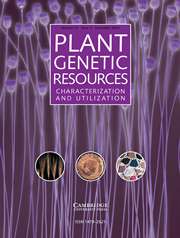No CrossRef data available.
Article contents
Differentiation of wild accessions within the Panax bipinnatifidus complex using newly developed polymorphic microsatellite markers
Published online by Cambridge University Press: 07 October 2024
Abstract
Panax L., renowned as ginseng genus, is a famous medicinal group of family Araliaceae. Within this genus, the taxa of Panax bipinnatifidus complex are mainly distributed in Himalayas and Hengduan Mountain areas. Due to the complex evolutionary history and short-term rapid radiation, the relationships among species within the complex have not been clearly resolved, and the taxa identification is difficult due to the intermediate morphological traits. This study aimed to use the available restriction-site associated DNA sequence data from 29 individuals of P. bipinnatifidus complex to mine high-polymorphic simple sequence repeat (SSR) markers, with the goal of evaluating their utility in taxa identification. Eleven polymorphic SSR loci were ultimately selected and validated through polymerase chain reactions amplifying across 63 individuals of P. bipinnatifidus complex and 13 individuals of three outgroup species. The subsequent genetic diversity analysis uncovered 76 alleles in total, ranging from 5 to 15 per locus. Observed heterozygosity spanned 0.241–0.512, while expected heterozygosity ranged between 0.345 and 0.644. The genetic kinship analysis revealed a sister relationship between Panax zingiberensis and Panax vietnamensis. The analysis result also supported the classification of samples from Hunan and Hubei provinces into a single genetic unit within the P. bipinnatifidus complex. These newly developed SSR markers will facilitate the identification of wild ginseng plants.
- Type
- Short Communication
- Information
- Copyright
- Copyright © The Author(s), 2024. Published by Cambridge University Press on behalf of National Institute of Agricultural Botany


